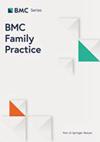Determinants of poor glycaemic control and proteinuria in patients with type 2 diabetes: a retrospective analysis of general practice records in Ireland
IF 3.2
3区 医学
Q1 MEDICINE, GENERAL & INTERNAL
引用次数: 0
Abstract
Analysis of general practice records can address the information gap on the epidemiology of type 2 diabetes (T2DM) in Ireland, informing practice and the development of interventions in primary care. The aim of this study was to identify patients with poor glycaemic control, risk factors for complications and evidence of end organ damage in a large multi-practice study and to profile their characteristics. Patients with T2DM were identified using disease coding in Health One practice management software in 41 general practices. Patients’ demographics and clinical data were extracted. Rates of poor glycaemic control (glycated haemoglobin > 58 mmol/mol) and albumin creatinine ratio > 3 mg/mmol were calculated. A multilevel logistic regression analysis using both patient and practice variables was conducted. Data was collected from 3188 patients of whom 29% (95% CI 28 to 31%) had poor glycaemic control, which was associated with younger age, higher BMI and higher total cholesterol. Only 42% of patients (n = 1332) had albumin creatinine ratio measured with 42% (95% CI 40 to 45%) of these having values > 3 mg/mmol. Older age groups, men, those with hypertension, eGFR < 60 ml/min/1.73m2 and poor glycaemic control were most associated with higher values of albumin creatinine ratio. Analysing this large multi-practice dataset gives important information on the prevalence and characteristics of diabetic patients who are most at risk of poor outcomes. It highlights that recording of some data could be improved.2 型糖尿病患者血糖控制不佳和蛋白尿的决定因素:对爱尔兰全科医生记录的回顾性分析
对全科医疗记录的分析可以弥补爱尔兰 2 型糖尿病 (T2DM) 流行病学方面的信息缺口,为全科医疗实践和干预措施的制定提供参考。本研究的目的是在一项大型多诊所研究中识别血糖控制不佳、有并发症风险因素和终末器官损伤证据的患者,并分析他们的特征。研究人员在 41 家全科诊所使用 Health One 诊所管理软件进行疾病编码,确定了 T2DM 患者。研究人员提取了患者的人口统计学和临床数据。计算了血糖控制不良率(糖化血红蛋白 > 58 mmol/mol)和白蛋白肌酐比值 > 3 mg/mmol。利用患者和临床变量进行了多层次逻辑回归分析。研究收集了 3188 名患者的数据,其中 29% (95% CI 28 至 31%)的患者血糖控制不佳,这与患者年龄较小、体重指数(BMI)较高和总胆固醇较高有关。只有 42% 的患者(n = 1332)测量了白蛋白肌酐比值,其中 42% (95% CI 40 至 45%)的比值大于 3 毫克/毫摩尔。年龄较大、男性、患有高血压、eGFR < 60 ml/min/1.73m2 和血糖控制不佳的患者与较高的白蛋白肌酐比值最为相关。对这一大型多实践数据集进行分析,可提供有关最易出现不良后果的糖尿病患者的患病率和特征的重要信息。它强调了某些数据的记录有待改进。
本文章由计算机程序翻译,如有差异,请以英文原文为准。
求助全文
约1分钟内获得全文
求助全文
来源期刊

BMC Family Practice
医学-医学:内科
CiteScore
3.20
自引率
0.00%
发文量
0
审稿时长
4-8 weeks
期刊介绍:
BMC Family Practice is an open access, peer-reviewed journal that considers articles on all aspects of primary health care research. The journal has a special focus on clinical decision making and management, continuing professional education, service utilization, needs and demand, and the organization and delivery of primary care and care in the community.
 求助内容:
求助内容: 应助结果提醒方式:
应助结果提醒方式:


